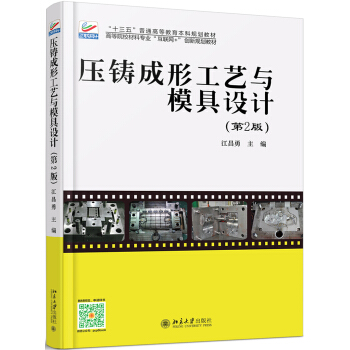

具体描述
编辑推荐
本书是美国乃至国际上非常有影响力的电路教材之一,经过五次版本更新,经成为众多学生和老师心目中的经典教材。以电路基础知识、电路分析方法为主体,辅以典型例题,并穿插介绍电子工程相关历史人物与知识,旨在改变以往枯燥的电路课程教学,引*新时代教材改革。内容简介
本书前5版获得了极大的成功,第6版更新了所涉及领域的一些内容和较新的研究进展,涵盖了我国“电路分析基础”课程的全部教学要求和“电路理论基础”课程的大部分要求,全书分为直流电路、交流电路与高级电路三部分,还囊括了学生需要掌握的所有常用数学公式和物理基本原理。利用六步解题法。求解和解决电路问题的六步法贯穿全书,以帮助学生建立一个求解问题的系统方法,更好地理解理论并减少计算错误。结合工程实际应用。每章最后一节专门介绍与该章概念相关的实际应用,每章至少提供一个实际应用问题或者实际元器件,帮助学生了解如何将所学概念应用于实际系统中。适合用做双语授课或英文授课的教材。还新增和修订了大量章后习题,为学生提供了充分的练习,同时帮助学生掌握关键概念。作者简介
Charles K. Alexander 分别于1967年和1971年获得俄亥俄大学的电气工程学硕士学位和博士学位,目前为美国克利夫兰州立大学Fenn工学院电气与计算机工程系教授以及电子学与航空航天技术研究中心(CREATE)的主任。他是IEEE的会士,曾任IEEE主席和CEO。他于1984年获得IEEE百年纪念奖章,还先后荣获英国工程委员会颁发的杰出工程教育成就奖和杰出工程教育领导奖。Matthew N. O. Sadiku 博士,美国Prairie View A&M大学教授,兼任IEEE Transacfions on Education杂志副主编。他曾在朗讯、波音等公司从事研发工作,发表过百余篇学术论文,出版过20余部著作。
目录
ContentsPreface iv
About the Authors xi
PART 1 DC Circuits 2
Chapter 1 Basic Concepts 3
1.1 Introduction 4
1.2 Systems of Units 5
1.3 Charge and Current 6
1.4 Voltage 9
1.5 Power and Energy 10
1.6 Circuit Elements 14
1.7 Applications 16
1.7.1 TV Picture Tube
1.7.2 Electricity Bills
1.8 Problem Solving 19
1.9 Summary 22
Review Questions 23
Problems 24
Comprehensive Problems 26
Chapter 2 Basic Laws 29
2.1 Introduction 30
2.2 Ohm’s Law 30
2.3 Nodes, Branches, and Loops 35
2.4 Kirchhoff’s Laws 37
2.5 Series Resistors and Voltage Division 43
2.6 Parallel Resistors and Current Division 44
2.7 Wye-Delta Transformations 51
Delta to Wye Conversion
Wye to Delta Conversion
2.8 Applications 57
2.8.1 Lighting Systems
2.8.2 Design of DC Meters
2.9 Summary 63
Review Questions 64
Problems 65
Comprehensive Problems 77
Chapter 3 Methods of Analysis 79
3.1 Introduction 80
3.2 Nodal Analysis 80
3.3 Nodal Analysis with Voltage Sources 86
3.4 Mesh Analysis 91
3.5 Mesh Analysis with Current Sources 96
3.6 Nodal and Mesh Analyses by Inspection 98
3.7 Nodal Versus Mesh Analysis 102
3.8 Circuit Analysis with PSpice 103
3.9 Applications: DC Transistor Circuits 105
3.10 Summary 110
Review Questions 111
Problems 112
Comprehensive Problem 124
Chapter 4 Circuit Theorems 125
4.1 Introduction 126
4.2 Linearity Property 126
4.3 Superposition 128
4.4 Source Transformation 133
4.5 Thevenin’s Theorem 137
4.6 Norton’s Theorem 143
4.7 Derivations of Thevenin’s and Norton’s Theorems 147
4.8 Maximum Power Transfer 148
4.9 Verifying Circuit Theorems with PSpice 150
4.10 Applications 153
4.10.1 Source Modeling
4.10.2 Resistance Measurement
4.11 Summary 158
Review Questions 159
Problems 160
Comprehensive Problems 171
Chapter 5 Operational Amplifiers 173
5.1 Introduction 174
5.2 Operational Amplifiers 174
5.3 Ideal Op Amp 178
5.4 Inverting Amplifier 179
5.5 Noninverting Amplifier 181
5.6 Summing Amplifier 183
5.7 Difference Amplifier 185
5.8 Cascaded Op Amp Circuits 189
5.9 Op Amp Circuit Analysis with PSpice 192
5.10 Applications 194
5.10.1 Digital-to-Analog Converter
5.10.2 Instrumentation Amplifiers
5.11 Summary 197
Review Questions 199
Problems 200
Comprehensive Problems 211
Chapter 6 Capacitors and Inductors 213
6.1 Introduction 214
6.2 Capacitors 214
6.3 Series and Parallel Capacitors 220
6.4 Inductors 224
6.5 Series and Parallel Inductors 228
6.6 Applications 231
6.6.1 Integrator
6.6.2 Differentiator
6.6.3 Analog Computer
6.7 Summary 238
Review Questions 239
Problems 240
Comprehensive Problems 249
Chapter 7 First-Order Circuits251
7.1 Introduction 252
7.2 The Source-Free RC Circuit 253
7.3 The Source-Free RL Circuit 257
7.4 Singularity Functions 263
7.5 Step Response of an RC Circuit 271
7.6 Step Response of an RL Circuit 278
7.7 First-Order Op Amp Circuits 282
7.8 Transient Analysis with PSpice 287
7.9 Applications 291
7.9.1 Delay Circuits
7.9.2 Photoflash Unit
7.9.3 Relay Circuits
7.9.4 Automobile Ignition Circuit
7.10 Summary 297
Review Questions 298
Problems 299
Comprehensive Problems 309
Chapter 8 Second-Order Circuits311
8.1 Introduction 312
8.2 Finding Initial and Final Values 313
8.3 The Source-Free Series RLC Circuit 317
8.4 The Source-Free Parallel RLC Circuit 324
8.5 Step Response of a Series RLC Circuit 329
8.6 Step Response of a Parallel RLC Circuit 334
8.7 General Second-Order Circuits 337
8.8 Second-Order Op Amp Circuits 342
8.9 PSpice Analysis of RLC Circuits 344
8.10 Duality 3488.11 Applications 351
8.11.1 Automobile Ignition System
8.11.2 Smoothing Circuits
8.12 Summary 354
Review Questions 355
Problems 356
Comprehensive Problems 365
PART 2 AC Circuits366
Chapter 9 Sinusoids and Phasors 367
9.1 Introduction 368
9.2 Sinusoids 369
9.3 Phasors 374
9.4 Phasor Relationships for Circuit Elements 383
9.5 Impedance and Admittance 385
9.6 Kirchhoff’s Laws in the Frequency Domain 387
......
用户评价
对于我这样一位对技术充满好奇心的电子爱好者来说,《电路基础(英文版·第6版)》就像打开了一扇通往更广阔电子世界的大门。这本书的结构设计得非常合理,从最基础的直流电路,逐步过渡到交流电路,再到更高级的半导体器件和信号处理,内容涵盖面广,且脉络清晰。我尤其喜欢书中对于一些基本元器件的讲解,比如电阻、电容、电感,以及二极管、三极管等,作者都从物理原理出发,解释了它们的特性和工作方式,这让我对这些“小小”的元器件有了更深的认识,不再是简单的“黑盒子”。书中还包含了很多仿真实验的介绍,虽然我没有直接操作,但通过阅读描述,我仿佛也能感受到在虚拟电路中进行实验的乐趣。这本书的英文版本,反而让我有机会接触到更原汁原味的专业术语,并且在不知不觉中提升了我的专业英语阅读能力。总的来说,这本书满足了我对电路基础知识的系统学习需求,也激发了我进一步探索电子技术的兴趣。
评分这本《电路基础(英文版·第6版)》绝对是我近期遇到的最让人惊艳的教材之一。作为一名工程专业的学生,我对电路理论的学习一直抱有既敬畏又期待的心情。这本书从拿到手的那一刻起,就传递出一种严谨而又不失亲和力的感觉。精美的排版、清晰的插图,以及大段的英文讲解,一开始确实让我有些担心,但很快我就发现,这些担忧是多余的。作者在内容的组织上,循序渐进,从最基础的概念,比如电压、电流、电阻的定义,到复杂的电路分析方法,如基尔霍夫定律、节点分析法、网孔分析法,都进行了详尽而又生动的阐述。每一章的开头都会有一个引人入胜的实际应用场景,这极大地激发了我学习的兴趣,让我明白这些枯燥的理论究竟是如何服务于现实世界的。书中大量的例题更是锦上添花,它们不仅包含了不同难度级别的题目,而且每一步的解题过程都分析得非常透彻,让我能够跟着作者的思路一步步理解。特别是那些需要高级数学工具的题目,作者也巧妙地将相关知识点融入其中,让我感觉知识的学习是融会贯通的,而不是割裂的。读完一章,我总会感觉对某个知识点有了豁然开朗的认识,这种学习体验是前所未有的。
评分在我准备考研复习的过程中,找到一本合适的电路教材至关重要,而《电路基础(英文版·第6版)》最终成为了我的首选。这本书的优点在于,它既有扎实的理论基础,又不乏实用的工程应用。在理论层面,书中对电路分析的各种方法都有详细的推导和讲解,逻辑性非常强,让我能够理解公式和定理的由来,而不仅仅是死记硬背。我特别喜欢书中关于“模型”的思想,比如如何用等效电路来简化复杂的电路分析,这是一种非常强大的思维工具。在应用层面,书中提供了大量的实际电路设计和分析的例子,这让我能够将书本知识与未来的工程实践联系起来。比如,书中对RLC电路的阻抗和频率响应的分析,对于理解滤波器的设计非常有帮助。我注意到,这本书的英文表述非常精确,这对于我将来阅读更深入的英文文献非常有益。总而言之,这本书为我的考研复习打下了坚实的基础,也让我对电路这门学科有了更全面和深刻的认识。
评分坦白说,当初选择这本《电路基础(英文版·第6版)》多少有些“碰运气”的成分,因为我一直觉得英文教材在理解上可能存在一些障碍。然而,这本书彻底颠覆了我的看法。作者的写作风格非常流畅,语言表达清晰且富有逻辑性,即使是一些复杂的概念,也能用相对易懂的英文解释清楚。我最欣赏的是,书中并没有一味地堆砌公式和定理,而是通过大量的类比和图示,将抽象的电路原理具象化。比如,在讲解电流和电压时,作者会用“水流”和“水压”来类比,这种直观的解释方式,让我这个初学者也能很快抓住核心概念。此外,书中还穿插了许多“思考题”和“挑战题”,这些题目不仅能帮助巩固当堂所学,更能引导我进行更深入的思考和探索。我喜欢在完成一章学习后,尝试解答这些题目,这让我觉得自己不仅仅是在被动接受知识,而是在主动地参与到学习过程中。这种互动式的学习体验,极大地提升了我对电路学习的积极性和信心。
评分作为一名在职工程师,我常常需要回顾和更新我的电路知识,而《电路基础(英文版·第6版)》无疑成为了我案头的首选参考书。与我过去接触过的许多教材不同,这本书在理论的深度和广度上都做得非常出色。它并没有止步于简单的概念讲解,而是深入探讨了电路元件的非线性特性、瞬态响应、稳态分析等更高级的主题。特别让我印象深刻的是,书中对于AC电路部分的讲解,从相量分析到傅里叶级数、拉普拉斯变换在电路分析中的应用,都处理得非常到位,并且充分考虑了工程实践中的各种复杂情况。书中的图表质量极高,很多电路图都标注得非常清晰,即使是复杂的电路网络,也能一目了然。更重要的是,作者在讲解过程中,始终强调理论与实际的结合,提供了许多实际应用案例,例如滤波器设计、放大器分析等,这些内容对我日常工作有着直接的指导意义。我发现,这本书不仅能帮助我巩固基础,更能让我对电路系统的整体运作有更深刻的理解。每次阅读,我都能从中汲取新的知识和灵感,这对于我解决实际工程问题非常有帮助。
相关图书
本站所有内容均为互联网搜索引擎提供的公开搜索信息,本站不存储任何数据与内容,任何内容与数据均与本站无关,如有需要请联系相关搜索引擎包括但不限于百度,google,bing,sogou 等,本站所有链接都为正版商品购买链接。
© 2025 windowsfront.com All Rights Reserved. 静流书站 版权所有




















